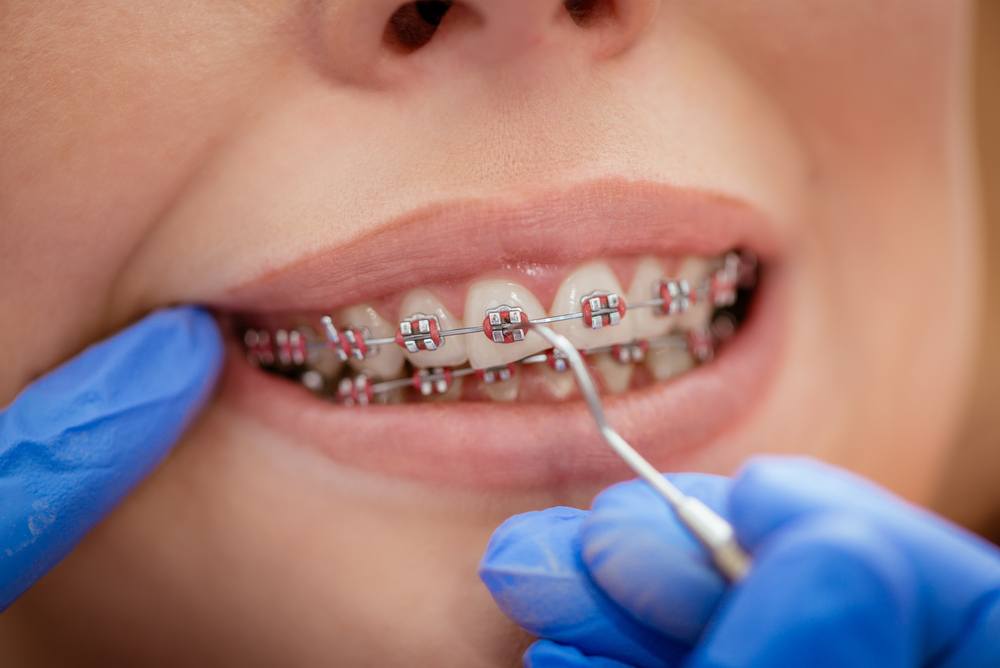Professional Cumming Braces and Aligners: What to Know Before You Check out
Professional Cumming Braces and Aligners: What to Know Before You Check out
Blog Article
Comprehensive Overview to Orthodontics Treatments for Correcting Dental Misalignments
Comprehending the ins and outs of each procedure, including their devices, benefits, and possible disadvantages, is critical in making educated decisions concerning one's orthodontic treatment. As we navigate through the extensive overview to orthodontic procedures for remedying dental imbalances, the detailed details of each technique will unfold, losing light on the path towards a functional and harmonious oral alignment.
Orthodontic Procedures Introduction

Routine changes and tracking are critical parts of orthodontic treatment to ensure progress is on track and to make any kind of necessary adjustments along the means. By undertaking orthodontic treatments, patients can not just attain a straighter smile however additionally improve their overall oral health and wellness and feature.
Traditional Dental Braces: Just How They Function
When thinking about orthodontic treatments for oral misalignments, standard dental braces stand apart as a reliable technique for dealing with teeth placing. Traditional dental braces contain braces, cords, and bands that function with each other to use constant stress on the teeth, progressively moving them into the desired positioning. The braces are connected to the teeth using a special adhesive, and the wires are threaded with the brackets. By changing the stress of the cords, orthodontists can control the direction and force put on each tooth, leading them right into correct placement over time.
One key facet of exactly how conventional braces work is the process of bone makeover. As stress is put on the teeth with the braces, the bone bordering the teeth is improved to support the brand-new tooth settings. This renovation is vital for the lasting security of the remedied positioning. People will certainly require routine changes at the orthodontist's office to ensure the dental braces continue to apply the appropriate pressure for efficient teeth movement.
Unnoticeable Aligners: Disadvantages and pros
Invisible aligners provide a practical and very discreet choice to typical dental braces for fixing oral misalignments. These clear, personalized trays are practically unnoticeable when worn, making them an attractive choice for people looking for a more aesthetically pleasing orthodontic treatment. Among the main benefits of undetectable aligners is their removability, permitting simpler maintenance of dental hygiene compared to typical dental braces. People can eliminate the aligners prior to consuming or brushing their teeth, decreasing the threat of food obtaining embeded the device and simplifying the cleansing procedure.

Surgical Orthodontic Options
Surgical treatments in orthodontics existing feasible options for resolving complicated oral misalignments that may not be successfully official site settled with traditional orthodontic treatments. While conventional dental braces and unseen aligners can fix lots of orthodontic issues, certain cases call for medical treatment to attain optimum outcomes. Surgical orthodontic alternatives are usually recommended for extreme malocclusions, considerable jaw disparities, and situations where the underlying bone structure needs adjustment to achieve correct alignment.
One typical surgical orthodontic procedure is orthognathic surgical procedure, which entails rearranging the jaws to remedy functional concerns such as problem chewing or talking. This surgery is commonly carried out in partnership with an orthodontist who helps line up the teeth prior to and after the treatment. Surgical orthodontics might likewise involve treatments to reveal affected teeth, eliminate excess gum tissue, or reshape the jawbone to develop a more harmonious facial account.
Prior to considering surgical orthodontic options, individuals undertake an extensive analysis to identify the necessity and prospective advantages of such interventions. cumming braces. While surgical treatment may seem overwhelming, it can considerably enhance both the function and looks of the smile in cases where standard orthodontic therapies fail
Retainers and Post-Treatment Care

Failing to conform with post-treatment care guidelines can result in regression, where the teeth gradually relocate back towards their original positions. Consistent retainer wear, great dental health, and routine dental check-ups are necessary for preserving the results attained with orthodontic surgical click treatment and guaranteeing the lasting security of the corrected dental positioning.
Verdict
In final thought, orthodontic treatments provide different choices for fixing dental misalignments. Surgical orthodontic alternatives are available for more serious imbalances. Overall, orthodontic treatments can effectively enhance dental health and wellness and visual appearance.
As we browse via the thorough overview to orthodontic treatments for fixing oral misalignments, the complex details of each technique will certainly unravel, losing light on the path towards a practical and unified oral positioning. - aligners
One of the most common orthodontic treatments is the use of braces, which consist of metal brackets and official site cables that use gentle pressure to progressively change teeth into the wanted placement.When thinking about orthodontic treatments for dental imbalances, typical dental braces stand out as a reliable method for fixing teeth positioning. In addition, undetectable aligners might not be appropriate for intricate orthodontic concerns that call for even more considerable teeth motion, as they are usually recommended for light to moderate cases. Retainers are custom-made orthodontic devices designed to hold teeth in their remedied positions after the conclusion of orthodontic treatment.
Report this page